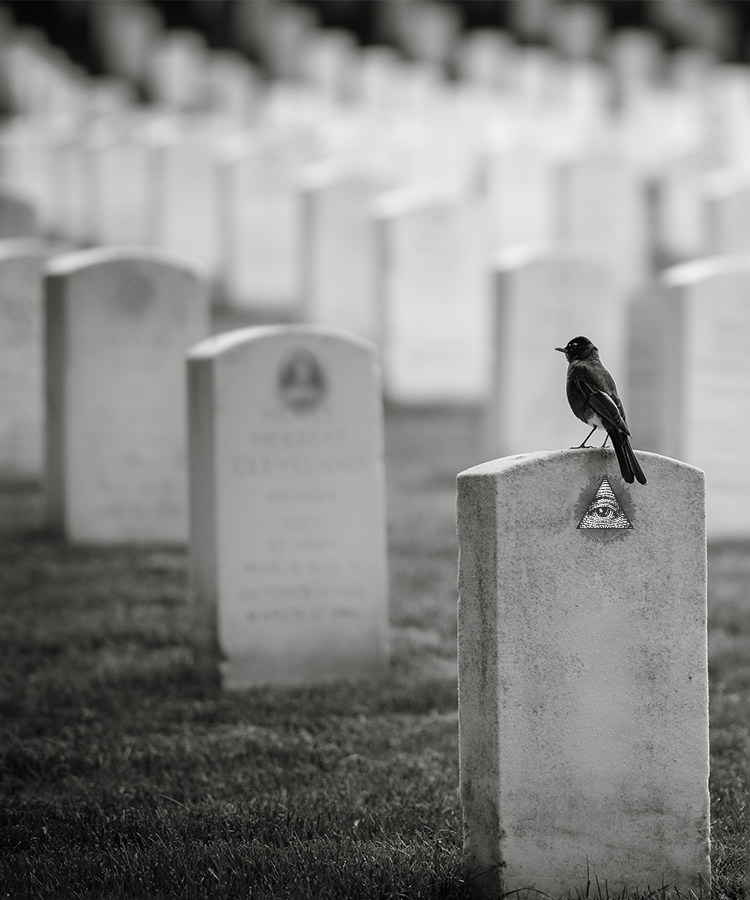It’s easy for people to feel like the government is after them. Whether it has to do with Monsanto, Avril Lavigne, or vaccines, there’s always a conspiracy group trying to make a case and prove their point (sometimes on large conspiracy cruise ships). But the truth is out there, and sometimes what sounds like a conspiracy theory is the truth. To wit, that time the U.S. government purposely poisoned the American people during Prohibition.
On Christmas Eve in 1926, more than 60 people were sent to the hospital from poisoned alcohol. Eight died, and 23 more died throughout the holiday season. “Doctors were accustomed to alcohol poisoning by then, the routine of life in the Prohibition era,” writes Deborah Blum, author of The Poisoner’s Handbook: Murder and the Birth of Forensic Medicine in Jazz Age New York, in Slate. “The bootlegged whiskies and so-called gins often made people sick. The liquor produced in hidden stills frequently came tainted with metals and other impurities. But this outbreak was bizarrely different.” This time, it wasn’t tainted gin that poisoned them. It was the U.S. government.
The U.S. government took drastic steps to keep people from drinking during Prohibition, the 13-year period when it was illegal to buy, sell, manufacture, or distribute alcohol in the U.S. More enforcement was the government’s answer to smuggled booze and moonshine. But for one source of illegal booze, the government reverted to poison: redistilled industrial-grade alcohol. That’s liquor that was initially produced for things like cleaning supplies and paint, which then has unpleasant chemicals added so that people wont drink it. The government started requiring this “denaturing” process — adding toxic or foul-tasting substances — back in 1906 for manufacturers who wanted to avoid taxes on potable spirits, writes Blum.
During Prohibition, people would steal the industrial alcohol and reprocess it into something somewhat consumable (somewhat being the operative word) and then sell it to thirsty Americans, like Antonio Rizzo, who was arrested in Brooklyn in 1922 at the Eureka Chemical Company with 25 gallons of denatured alcohol and a reprocessing machine. But pretty soon, the government decided that jailing these offenders wasn’t enough.
So in 1926, the Calvin Coolidge Administration decided to make it more toxic in the hopes that this would deter people from drinking the stuff. The government ordered companies to add even more additives to industrial alcohol, making it actually lethal. “The idea was to scare people into giving up illicit drinking,” Blum writes.
It didn’t work. Instead, by the end of Prohibition in 1933, the federal poisoning program had killed at least 10,000 people by some estimates.
Industrial alcohol itself became a deadline cocktail of chemicals. A short list of the additives that were listed in studies done by the New York City medical examiner in 1928 included the following:
Kerosene: A fuel made of distilled petroleum used today in jet engines, lamps, and cleaning solvent.
Brucine: A bitter and extremely poisonous alkaloid found in the seeds of the nux vomica plant that is used as an additive in lubricants and local anesthetics.
Gasoline: Refined petroleum used for internal combustion engines.
Benzene: A liquid from coal tar and petroleum that used to be in solvents, but is no longer used because it’s extremely carcinogenic.
Cadmium: A metal that resembles tin that’s used in plating, metal alloys, batteries, and pigments.
Zinc: A metal found in brass and used to galvanize iron and steel to protect against corrosion.
Mercury salts: A chemical compound of mercury and chlorine.
Nicotine: The chief active ingredient of tobacco that is also used in insecticides.
Ether: A highly flammable liquid used as an anesthetic and as a solvent.
Formaldehyde: A compound made from oxidized methyl alcohol that’s used as a disinfectant and preservative in resins and plastics.
Chloroform: A liquid used as a solvent that used to also be used as a general anesthetic.
Camphor: A crystalline compound used in insect repellent, as well as plastic and explosive production.
Carbolic acid: Also known as phenol, carbolic acid is a highly poisonous compound in antimicrobial and anesthetic solutions.
Quinine: A bitter alkaloid used to treat forms of malaria.
Acetone: A liquid made from oxidized isopropanol used as a solvent.
The poison only related to renatured industrial alcohol, which disproportionately affected the poor who couldn’t afford smuggled alcohol and booze cruises. Alcohol made by wine bricks, brought in by bootleggers, and sanctioned by the Church was still safe. Where the government could add poison, however, poison was added.
The government may not have been behind 9/11, but after reading this story, you’d be forgiven for being a little less skeptical of all those conspiracy theories.
